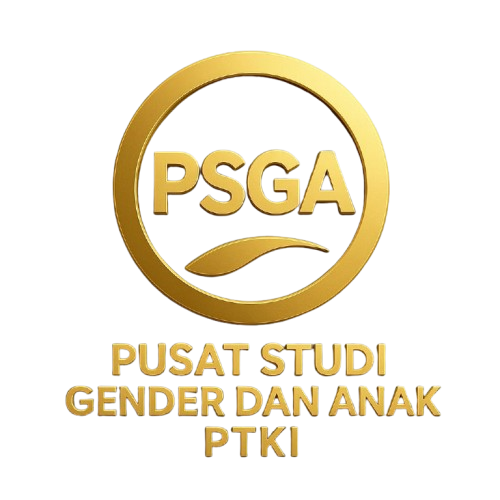Women in the Vortex of the Afghan Conflict Post-Taliban Control in 2021
DOI:
https://doi.org/10.32332/v7i01.10090Keywords:
Taliban, Perempuan, PerdamaianAbstract
The Taliban's success in taking back the Afghan government in August 2021 raised concerns for women in Afghanistan. Even though Taliban spokesperson Zabiullah Mujahid emphasized that the Taliban currently has a moderate ideology, in reality, the threat of domestication, discrimination, and structural alienation as carried out by the Taliban before 2001 continues to threaten the existence of women. This can be seen in various media reports, one of which is the CNN news headline. Through qualitative research, researchers conducted a study to find out how the media depicts the condition of women amidst the Taliban conflict in Afghanistan. Roland Barthes' semiotics is used as an analytical method to determine the meaning of denotation, connotation and myth. The results of the research show that there are three denotational meanings in CNN news headlines about the condition of women in Afghanistan, namely helplessness, resistance, and culminating in gathering international support. The connotation shows that the Taliban's discrimination against women is real. However, they did not accept this discriminatory policy, resulting in various kinds of resistance that attracted international attention. The CNN news headline builds a mythical meaning (message) that the pretext of enforcing Islamic law promoted by the Taliban is just a cover to alienate and discriminate against women. The Taliban's politics towards women actually contradicts the values of Islam as a religion of mercy and grace.
References
Adam, Muhamad Devasso Azzura, Fani Agustina Nababan, Muhammad Yusuf Abror, and Muchammad Yustian Yusa. 2022. “PERAN WOMEN’S INTERNATIONAL LEAGUE FOR PEACE AND FREEDOM DALAM PEMBERDAYAAN PEREMPUAN AFGHANISTAN.” Transformasi Global 9 (1): 64–77.
Ahmed-Ghosh, Huma. 2003. “A History of Women in Afghanistan: Lessons Learnt for the Future or Yesterdays and Tomorrow: Women in Afghanistan.” Journal of International Women’s Studies 4 (3): 1–14.
Amalia, Anindita Fikri, Nurdien Harry Kristanto, and Sukarjo Waluyo. 2022. “Semiotika Nonverbal Dalam Musik Video ‘Azza’ Karya Rhoma Irama (Kajian Semiotika Roland Barthes).” Diglosia: Jurnal Kajian Bahasa, Sastra, Dan Pengajarannya 5 (4): 731–48. https://doi.org/10.30872/diglosia.v5i4.494.
Ashghor, Aly. 2021a. “Taliban Di Afghanistan: Tinjauan Ideologi, Gerakan Dan Aliansi Dengan ISIS.” Jurnal Keamanan Nasional 7 (1): 71–83. https://doi.org/10.31599/jkn.v7i1.502.
———. 2021b. “Taliban Di Afghanistan: Tinjauan Ideologi, Gerakan Dan Aliansinya Dengan ISIS.” Jurnal Keamanan Nasional 7 (1): 71–83. https://ejurnal.ubharajaya.ac.id/index.php/kamnas/article/view/1658.
Barlas, Asma. 2003. Cara Qur’an Membebaskan Perempuan. Banten: PT. Serambi Ilmu Pustaka.
Barthes, Roland. 1972. Mythologies. New York: Hill and Wang.
———. 1977. “Barthes, R. (1977). Image, Music, Text. (S. Heath, Ed.)The Journal of Aesthetics and Art Criticism (Vol. 37, P. 220). Hill and Wang. Doi:10.2307/429854Image, Music, Text.” Journal of Aesthetics and Art Criticism 37 (2): 235–36. https://doi.org/10.2307/429854.
Basu, Rupsa. 2023. “Interface between Practice of Islam by the Mujahideens in Afghanistan and Women Rights.” Indian J. Integrated Rsch. L. 3:1.
Chandler, Daniel. 2022. Semiotics: The Basics. Routledge.
Chatterjee, Debangana. 2023. “Afghan Women and the Burqa Trope: Mapping Agency in Liminality.” In The Politics of Silence, Voice and the In-Between. Routledge.
“Clarifying The CNN Effect: An Examination of Media Effects According to Type of Military Intervention.” n.d. Accessed January 8, 2024. https://dash.harvard.edu/handle/1/37371065.
Coban, Filiz. 2016. “The Role of the Media in International Relations: From the CNN Effect to the Al –Jazeere Effect.” Journal of International Relations and Foreign Policy 4 (2). https://doi.org/10.15640/jirfp.v4n2a3.
Dutta, Mondira. 2023. “Disappearing Afghan Women from Public Spaces — Collapse of Women’s Rights in Afghanistan.” Bulletin of the Karaganda University History. Philosophy Series 111 (3): 79–89. https://doi.org/10.31489/2023hph3/79-89.
Fatianda, Septian. 2023. “Politik Islam Di Afghanistan: Studi Terhadap Kekuasaan Kelompok Taliban.” Local History & Heritage 3 (1): 12–19. https://doi.org/10.57251/lhh.v3i1.907.
Goodson, Larry P. 2001. “Perverting Islam: Taliban Social Policy toward Women.” Central Asian Survey, December. https://doi.org/10.1080/02634930120104618.
Guéhenno, J. 1998. “The Impact of Globalisation on Strategy.” Survival 40 (4): 5–19. https://doi.org/10.1080/713660009.
Hadi, Ido Prijana. 2007. “CULTIVATION THEORY SEBUAH PERSPEKTIF TEORITIK DALAM ANALISIS TELEVISI.” Scriptura 1 (1). https://doi.org/10.9744/scriptura.1.1.
Hanif, Kalsoom, Muhammad Abrar Ahmad, Faiza Raees, Mariam Riasat, and Aman Ilyas. 2022. “Women’s Rights In Afghanistan Under Taliban Rule 1996-2001 And 2021-2022: A Comparative Study.” Journal of Namibian Studies: History Politics Culture 32:314–32.
Holzer, Lena. 2020. “What Does It Mean to Be a Woman in Sports? An Analysis of the Jurisprudence of the Court of Arbitration for Sport.” Human Rights Law Review 20 (3): 387–411.
Ikhsana, Lisa, and Eka Imroatun Khasanah. 2020. “The Urgency of Guaranteeing the Protection of Women’s Rights in Afghanistan Post-Taliban Leadership Based on International Human Rights Principles.” Jurnal Scientia Indonesia 6 (2): 179–206. https://doi.org/10.15294/jsi.v6i2.36136.
Mallyar, Homayoun. 2023. “Women’s Rights in the Taliban Regime.” International Studies 20 (2): 78.
Mayasari, Lutfiana Dwi. 2024. “KONTESTASI OTORITAS KEAGAMAAN DALAM TAFSIR GENDER DI WEBSITE (STUDI MUSLIMAHNEWS.NET DAN BINCANGMUSLIMAH.COM).” SETARA: Jurnal Studi Gender dan Anak 6 (01): 21–38. https://doi.org/10.32332/jsga.v6i01.8147.
Mayasari, Lutfiana Dwi, and Ary Junaedi. 2017. “Jihad dan Terorisme dalam Islam (Kajian Semiotika Roland Barthes dalam Film Phantom)” 4 (1).
Mayasari, Lutfiana Dwi, and Juwita Eka Prasasti. 2024. “Relevansi Konsep Kesetaraan Gender Dengan Nilai-Nilai Pendidikan Islam Menurut Husein Muhammad Dan M. Quraish Shihab.” IJouGS: Indonesian Journal of Gender Studies 5 (1): 68–88. https://doi.org/10.21154/ijougs.v5i1.9649.
McCombs, Maxwell, and Sebastian Valenzuela. 2020. Setting the Agenda: Mass Media and Public Opinion. John Wiley & Sons.
Mohamed Shafik Abdelrazek, Heba. 2022. “Gender in Conflict: The Semiotics of Afghan Women photos after ‘Taliban offensive 2021’ in Newswires.” 2022 (36): 2–34. https://doi.org/10.21608/jkom.2022.232582.
Muafiah, Evi, Lutfiana Dwi Mayasari, and Ulfa Wulan Agustina. 2022. “WOMEN AND NETWORKING AUTHORITY IN BOARDING SCHOOL: THE BACKGROUND AND LIFE HISTORY PERSPECTIVE.” Kodifikasia: Jurnal Penelitian Islam 16 (2): 189–204. https://jurnal.iainponorogo.ac.id/index.php/kodifikasia/article/download/5327/pdf.
Nwe, Soe M. 2022. “Pathways to Public Life for Professional Women in Afghanistan: Negotiating Shifting Patriarchal Political Regimes and Gender Regimes.”
Official iNews, dir. 2021. Tanggapan Abdul Muta’ali & Sukamta Terkait Taliban Kuasai Afghanistan Indonesia Bicara 20/08. https://www.youtube.com/watch?app=desktop&v=Wz_KE_wUmUQ.
Palogai, Ibnu Sina. 2021. “Kolonialisme Dan Kekalahan Dalam Perang Makassar Sebagai Mitos Dalam Kajian Semiotika Roland Barthes.” JOEL: Journal of Educational and Language Research 1 (5): 459–66. https://doi.org/10.53625/joel.v1i5.872.
Planas, Antonio. 2021. “Female Mayor in Afghanistan Says She’s Waiting for Taliban to ‘Come ... and Kill Me.’” 2021. https://www.nbcnews.com/news/world/female-mayor-afghanistan-says-she-s-waiting-taliban-come-kill-n1276914.
Rahman, Abd, and Mifda Hilmiyah. 2024. “Media Sosial dan Masyarakat: Ditinjau Dari Analisis Kultivasi Media.” KOMUNIDA : Media Komunikasi dan Dakwah 14 (1): 79–97. https://doi.org/10.35905/komunida.v14i1.9643.
Robinson, John Timothy. 2021. “Ground of a Theory: The Language Codes of Roland Barthes and American Critical Structuralism.” Language and Semiotic Studies 7 (1): 79–106.
Rohmaniyah, Inayah, Agus Indiyanto, Zainuddin Prasojo, and Julaekhah Julaekhah. 2022. “Redefining Status through Burqa: Religious Transformation and Body Politics of Indonesia’s Woman Migrant Workers.” HTS Teologiese Studies/Theological Studies 78 (4): 7270.
Rokhimah, Siti. 2014. “PATRIARKHISME DAN KETIDAKADILAN GENDER.” Muwazah 6 (1): 132–45. https://e-journal.uingusdur.ac.id/Muwazah/article/view/9083.
Sabda Ningsih. 2022. “Ambiguitas Strategi Identitas Cnn Terhadap Islamophobia Dan Anti-Amerika (Kasus: Cnn.Com Dan Cnnindonesia.Com).” Indonesian Journal of International Relations 6 (2): 412–32. https://doi.org/10.32787/ijir.v6i2.366.
Sial, Hafsah Nawaz. 2023. “Gendered Islamophobia: Muslim Women in The American Media Frame, An Analysis of The Framing of Muslim Women by Fox News And CNN in The Age of Islamophobia.”
Syarif Hasyim, Muhammad, and Randy Atma R Massi. 2022. “Gerakan Taliban Antara Jihad, Makar Serta Tragedi Kemanusiaan Di Afganistan.” Comparativa: Jurnal Ilmiah Perbandingan Mazhab Dan Hukum 3 (1): 89–118. https://doi.org/10.24239/comparativa.v3i1.36.
Tamburaka, Tamburaka. 2012. Agenda Setting Media Massa. Jakarta: Raja Grafindo Persada.
Vardiansyah, Dani. 2018. “KULTIVASI MEDIA DAN PERAN ORANGTUA: AKTUALISASI TEORI KULTIVASI DAN TEORI PERAN DALAM SITUASI KEKINIAN.” KOMUNIKOLOGI: Jurnal Ilmiah Ilmu Komunikasi 15 (1). https://doi.org/10.47007/jkomu.v15i1.193.
Worley, William. 2022. “Hosna Jalil: Witness to the Rise and Fall of Afghan Women.” Devex. June 29, 2022. https://www.devex.com/news/sponsored/hosna-jalil-witness-to-the-rise-and-fall-of-afghan-women-103359.
Downloads
Published
Issue
Section
License
Copyright (c) 2025 Lutfiana Dwi Mayasari

This work is licensed under a Creative Commons Attribution-ShareAlike 4.0 International License.






